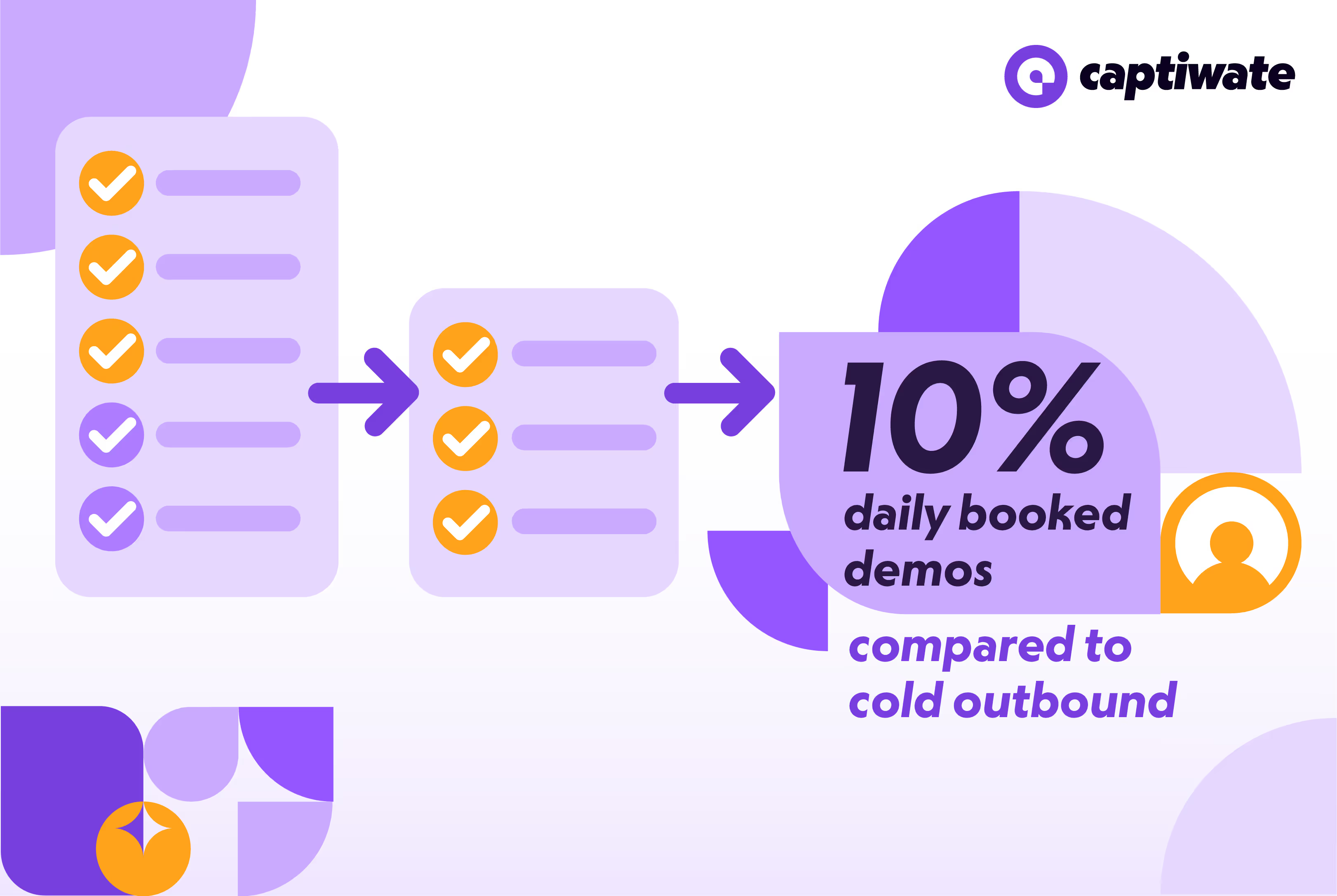No, the SDRs Aren’t Going Extinct - But There is a New Playbook to Adapt


If you’re following the conversation on sales, as of late the internet would have you believe that the SDR is dead.
- WHY THE SDR ROLE IS DEAD AND WHAT YOU CAN DO INSTEAD OF HIRING ONE - claims Digital Mindmeld
- Is the SDR role dead? - asked Mandy Cole from Stage 2 Capital
- Why the SDR model as we know it is dead - screams SalesLabs
… and so on, every day on LinkedIn and every other channel.
And look, I get it. We know that the classic model that had an army of SDRs toiling away at chasing outbound leads has run its course, with response rates plummeting since 2017. While the pandemic lockdowns normalized fully digital deal-making, buyer behavior has changed accordingly.
Studies prove that buyers are now more likely to do research and prefer to try products out themselves which run counter to outbound lead sales motions.
Furthermore, what was already a crowded area is now flooded by AI tools that are sending more emails, InMails, initiating calls, and bombarding website visitors with notifications that are further eroding conversion rates across the board.
Buyers have finite attention after all, and they are simply exhausted at this point.
This makes the job of an SDR harder and harder. As the role evolved in the past years, the required tooling for the job became more complex as well.
On average, an SDR will be switching between 3-4 different tools constantly:
- Checking the CRM for contact information and details,
- Using Apollo or Zoominfo for contact details,
- Switching between data enrichment providers for more points of contact,
- not to mention the communication tools from social platforms, emails, chats, etc.
Adding further frustration is the fact that data synchronization and quality are constant issues between the different systems, requiring manual cleanups and entries.
While automation is widely available and used, there’s nothing more embarrassing than, for example, launching a new prospect cadence on an existing customer because they weren’t identified correctly as such.
After an SDR has dealt with all that, they will still likely have to face either a blank slate, having no scripts or guidelines available for their outreach, or on the other side of the same coin, being confined by too tight templates that leave little room for personalization.
The result? Out of 100s of cold outreach attempts, you’re lucky to get 2-3 meetings booked from the 20~ something people that bothered to answer.
Ouch.
Needless to say, bombarding these poor souls with messages on how their jobs will go extinct is just adding insult to injury.
However, reports on the death of the SDR are greatly exaggerated. The role continues to serve an important function, but it has to evolve within the wider context of how buying and selling online is changing.
The biggest shift in this area can be summed up as meeting your buyer’s expectations on how they want to buy, not how it’s convenient for you to sell.
In other words, it’s not about outbound losing efficiency, but the distinction between outbound and inbound collapses.
How the SDR Playbook is Changing
If we compare the old way of selling with the new way of buying, we can immediately see where the two approaches are misaligned:
Old SDR Playbook
New Way of Buying
- Use data to find good candidates
- Mass cold-outreach
- Convince buyers to hop on a call
- Research is done by the time they contact a vendor
- Preference for self-serving solutions
- Decisions are made quickly
In short, the old SDR playbook relies on targeting your total addressable market and hoping that you find the people who are about to buy right now. The new way of buying, however, is how customers actually act when they enter the market in search of a solution.
The new SDR playbook then relies on facing this reality and removing as much friction as humanly possible from the buying process. Instead of mass spray and pray, it’s highly tailored and personalized to the customer while being very time-sensitive, as the window of opportunity is open only for so long.
In fact: 75% of prospects will do business with the company that responds first, all other efforts be damned!
Instead of wasting time and effort on cold contacts, forward-looking companies have realized that they have to:
- Identify who is on their website,
- Highlight and prioritize the visitors who are showing strong purchasing intent,
- And offer them a chance to chat or call while they are still engaged with the service.
The result? A massive increase in conversion rates and no more burned-out SDRs. This approach yielded a 10x increase in daily booked demos over cold outreach while I was at TestGorilla.

Of course, the old approach is hard to let go, of because it seems like a numbers game that you can scale with more people. Furthermore, the amount of meaningful interactions you can have is heavily dependent on the traffic your website is getting - which is a task that sits with marketing, not sales.
But it pays dividends. After all, who would you trust more? A company that cold-contacts thousands of people with the same cookie-cutter, AI-generated messages, or a company that gets you in front of a human as soon as you show interest?
Successfully Implementing the New SDR Playbook
We’ve been hinting at it, but first and foremost this is about a change in mindset - then a change in procedures and tooling.
Re-aligning Sales and Marketing
The new approach relies on interested prospects hitting your website constantly. This requires considerable marketing efforts and constant campaigning with the aim of placing your brand on the top of minds of people when they are ready to buy. Sales should help marketing by being experts on the problems that your customers are having. These problems can be turned into content and advertising by your marketing team to attract the right visitors.
Visitor identification
Google analytics isn’t going to cut it. You need visitor identification technology that can identify which companies, or better yet exactly who is on your website using data sources like Apollo, Clay or RB2B.
Intent Monitoring
Not all visitors are equal, but if someone has been viewing you on software comparison websites or is scrolling your pricing page, you can bet that they are highly interested. Using intent data allows you to score and prioritize visitors to find the most engaged leads.
Live Chat & Video Calls
In this age of rampant AI bots, customers are delighted when they get to talk to an actual human being. By offering them a live chat, or even a video call then and there, you cut out friction in the buying process. This way, you can contact people who haven’t even submitted a form and given you contact details and answer questions that otherwise they would’ve been too shy to ask.
Best of all: you can run laps around your competitor who’d still make them go through emails or have them book a call just to clarify basic information.
Let the SDR Personalities Shine
This is partly about making more business and partly about making sales fun again. Your SDRs are unique characters, and you should let them experiment with their messages and tone (while aligning with your brand, of course) to find out what resonates with your customers. Where everybody else is telegraphing “we don’t care about you” with the use of automated, AI messages, you can differentiate by offering an actual human experience.
Use One Platform, Not Many
Instead of having your SDRs rotate through 4-5 different pieces of software just to get their job done, use a single, unified platform like Captiwate. Bringing together visitor identification and intent data with chat and video calling capabilities makes the above process a piece of cake. If you’re interested in trying out Captiwate for your business, feel free to book a call with us.
Concluding Thoughts: Long Live the SDRs
Changing market conditions force players to adapt - or die. Right now, it very much looks like cold outreach and sales tactics depending on scaling them have run their course.
But that doesn’t mean that SDRs are going extinct. They’re still the soul of any sales organization, and it’s a question of strategy on how to best empower them.
Instead of having them chase people who are not interested, enable them to speak directly with your most interested prospects while they’re the most engaged. This way, you’ll find that instead of extinction, you’ll see happy customers and a motivated sales team who’s eager to talk to them.
.avif)

